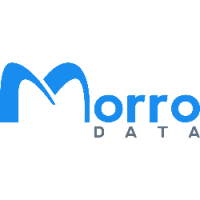Surviving Ransomware: A Focus on Data Recovery and Resilience
Surviving Ransomware: A Focus on Data Recovery and Resilience
Ransomware attacks are increasingly common and devastating for businesses of all sizes. As of June 2024, the cyber incident affecting retail software provider CDK Global is still ongoing. This attack has paralyzed nearly 15,000 car dealerships, and it will likely take several days for its software to be back online and operational. While prevention often garners much attention, understanding how companies are affected and focusing on data recovery and downtime reduction strategies is equally important. Here’s a closer look at how ransomware attacks unfold and how businesses can effectively recover their data.
How Companies Are Hit by Ransomware
1. Phishing Attacks
An employee receives an email that appears to be from a legitimate source, such as a trusted partner or a known service provider. The email contains a malicious link or attachment. Once the link is clicked or the attachment is opened, malware is downloaded and executed, encrypting files on the employee’s computer and potentially spreading to the entire network.
2. Exploiting Vulnerabilities
Cybercriminals scan for vulnerabilities in software or systems that haven’t been patched or updated. This includes unpatched operating systems, outdated software, or misconfigured servers. Exploiting these vulnerabilities allows attackers to gain unauthorized access to the network, where they can deploy ransomware.
3. Remote Desktop Protocol (RDP) Attacks
Attackers use brute force techniques or stolen credentials to gain access to systems through RDP, a common protocol used for remote management. Once inside, they can install ransomware and begin the process of encrypting files.
4. Drive-By Downloads
An employee visits a compromised or malicious website that automatically downloads malware without their knowledge. The malware installs ransomware, leading to the encryption of files on the affected system.
Data Recovery and Resilience with Cloud NAS
In the wake of a ransomware attack, one of the most critical aspects of recovery is the ability to restore data quickly and effectively. Morro Data CloudNAS offers a robust solution with its file versioning feature. File versioning allows businesses to maintain multiple versions of their files, making it possible to roll back to a previous version before the ransomware attack occurred. This capability significantly reduces downtime and data loss, providing a lifeline for companies to restore operations with minimal disruption.
Enhanced Protection with CiC
During a ransomware attack, the on-premises CacheDrives will most likely be shut down to prevent the spread of the malware. However, Morro Data CiC (CacheDrive in Cloud) can still be accessed for data recovery. This solution ensures that even if local systems are compromised, businesses can still retrieve clean versions of their data from the cloud. By leveraging CiC for shared versioning rebuild, companies can restore their operations swiftly and securely, maintaining access to critical files and minimizing downtime. This added layer of protection ensures that data recovery remains possible even in the most challenging scenarios.
